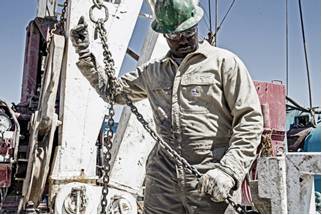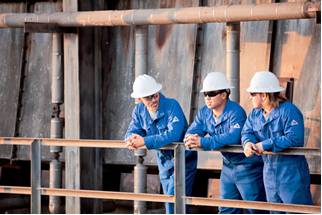
Incident Report Subject: What the Well-Dressed Fracker Is Wearing Date of Email report: Thu 16/05/2013 Report Detail:
"It's deep consumer ethnography," said Steve Rendle, VF's president of outdoor and action sports. Following the 2010 OSHA memo, retailers near oil fields in North Dakota, Montana, Pennsylvania and Texas began seeing workers come in to outfit themselves in new gear. "Before 2010, you would see workers in jeans and cotton T-shirts with the sleeves ripped off," said Tom Kiddle, director of industrial sales at Carhartt, a closely held clothing manufacturer based in Dearborn, Mich. "Suddenly thousands of workers were pouring into the oil business and were being told they had to wear flame-resistant clothing." Over the past five years, the oil-and-gas industry added about 180,000 jobs, and annual sales of Carhartt's flame-resistant clothing increased by double digits, he said. Carhartt, which sells its wares at retailers such as J.C. Penney Co. JCP +1.88%and Cabela's, also makes boots, jackets, and other clothing that aren't flame-resistant. The clothes don't come cheap: A Carhartt flame-resistant bomber jacket runs up to $205. A pair of VF's flame-resistant Wrangler jeans cost about $60. By comparison, a regular pair of Wrangler's costs about $15 at Wal-Mart WMT +1.37%. Manufacturers have had to redesign safety-minded clothing to make it lighter and more comfortable to win over customers such as Vince Anderson, a 47-year-old well site geologist in the Eagle Ford Shale in Texas. "In the early days of fire resistant [clothing], it was just a spray-on treatment and the clothes were really, really hot," said Mr. Anderson. He now spends $150 for a long-sleeved button-down shirt and jeans from VF's Bulwark brand that he said needs to be replaced each year. Borrowing innovations from sports performance gear like football jerseys and track pants, manufacturers are using materials that wick away sweat and make clothes more breathable. They use softer, lighter fabrics and antimicrobial technology that gets rid of odor-causing bacteria and keep workers smelling better. The U.S. military has also played a role in the safe-clothing expansion by pushing U.S. textile mills to create flame-resistant fabrics cool enough that soldiers can wear them in war zones in Iraq and Afghanistan. In turn, the textile mills plunged the research and technology into fabrics they make for frackwear manufacturers. "It's the same concept as the clothes athletes wear to improve their performance," said Ashley Pope of Tecgen Select, a brand of flame-resistant clothing acquired in March by Invista, a subsidiary of Koch Industries Inc. "Just like with athletes, we're trying to keep them comfortable so they can work harder." Employees at Carhartt are showing up at drilling sites to scout for "influencers" to wear its jackets, pants and shirts. Long-tenured workers or supervisors who test the clothes can sway others to wear the brand. But they also help the company improve on the products. Carhartt asks testers to wear the gear for 60 to 90 days and then report back with criticism. One such tester is Bob Snow, 59, a quality-control inspector at an oil-and-gas refinery in Houston. "When you're on your feet all day crawling through small spaces and climbing stairs in 100-degree heat, the last thing you want to do is fight your clothes," he said. Although fashion isn't his top priority, he added that the updated styles mean he will "even wear the jeans out on the weekends." Additional Documentation: Video and Audio available here: http://online.wsj.com/news/articles/SB10001424127887323798104578453310080203022 |


